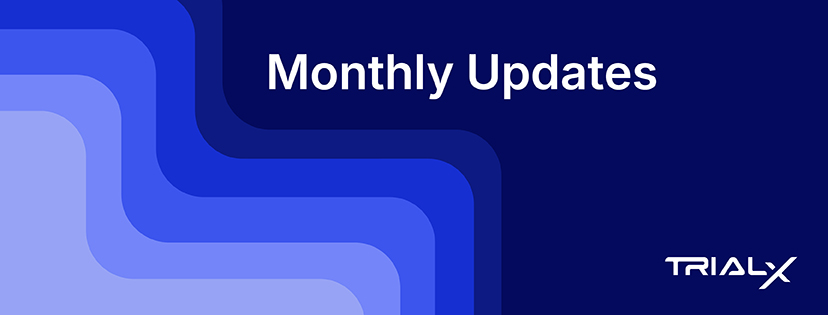Understanding mHealth Opportunities: Making Healthcare Accessible, Faster, Better, and Cheaper.
The Centers for Disease Control and Prevention (CDC) describes mobile health (mHealth) as the practice of using mobile technologies to support public health and medicine. The ease of access and mobility provided by the use of mobile technology offers immense opportunities for the healthcare industry to address one of the most pressing global challenges: Making healthcare more accessible, faster, better, and cheaper.
Healthcare users now expect tailored content to satisfy their thirst for knowledge. While social media channels offer opportunities to track online audience, mobile opens up other extensive features such as push notifications, SMS, geo-location and preference settings.
Along with all these features comes the most convenient side — the ease of using mobile applications and internet services whenever, wherever, and however users wish to. TrialX’s recently launched DIY research study app building platform, Appbakery is a perfect example of how the ever-increasing sophistication and development of smartphones is a catalyst driving this change further. Mobile apps, activity trackers, algorithm-based symptom checkers and so on — these are the new entrants in the field of healthcare.
While the world is connected through the internet today, it’s hard to understate the importance of online patient experiences. Driven by the excellent online customer experiences they have had with services in other industries, healthcare consumers now have an inclination for the same in healthcare, as well.
Digital patient engagement is the foundation for building positive patient relationships.
By using mobile devices in the healthcare setting, practices have the potential to enhance productivity, lower failure-to-respond rates, increase information access and communication. There are several specific ways that this technology has become popular over the last few years.
These include:
Medication/treatment compliance – One of the hardest things for medical professionals to control is how patients handle their medication once they have headed home.
There is no guarantee that a patient is going to follow the guidelines laid out by a physician or tell false information when they have follow-up appointments. For patients who have chronic or critical conditions, keeping to a strict medication regimen can not only help patient’s health, but also lower a hospital’s costs by reducing readmissions.
This is done through reminder messages set to patients about when and how to take medication, notifications of when prescriptions should be refilled and daily messages that ask if certain medications have been taken, which acts as a reminder but also transmits that information back to physicians, who can use it to ensure medications are taken correctly.
This type of feedback and reminding can also be used post treatment, as it is not uncommon for post surgery paperwork to be lengthy. However, with digital information and the ability to quickly message a doctor’s office, it is much easier to get clarifications and follow instructions.
Improved information access – There are numerous ways that consumer technology is helping people stay healthy through sensors and tracking. However, the ability to access their medical records has not been included.
Courtesy: http://www.jailmedicine.com/
That has changed in recent years as the use of patient online portals and mobile applications has changed the ability to access patient records. This helps patients and hospitals better coordinate care and ensure that important information is shared with the individuals that need it.
Aggregated data/population health – By pulling patient and healthcare information together into a single location, providers will have access to the newest and greatest evidence-based medical practices. This helps ensure that the best possible health outcome is achieved.
Courtesy: Geneia
This also helps physicians stay on top of the latest health trends in real time. Doctors, federal agencies and healthcare organizations are able to access baselines of trends and have the best idea of how to proceed next.
Leveraging mhealth in a clinical trial scenario
The emergence and popularity of patient-centric applications provide a great opportunity for pharmaceutical manufacturers to engage patients and create a customized, direct relationship with them. And the clinical trial space provides an excellent channel to leverage these technologies. The integration of mobile technology in new clinical trial design and business strategy development holds promise for aligning site and patient needs with faster study execution and reduced costs.
Mobile technologies are already being used in clinical trial recruitment and retention, with the capacity to be used even more.
Courtesy: thenextweb.com
Specific studies and opt-in databases have the potential to:
- Provide patients with access to studies they would not otherwise know about
- Reduce site visits by wireless data tracking via devices
- Allow investigative site staff access to several different formats of study materials and tools
- Personalize patient retention activities such as
- Email and SMS: Visit, medication and diary reminders
- Online patient surveys and assessments
- Wearables
- Newer retention techniques such as Gamification and online community access
Many of these activities can be accessed on the patient’s own smartphones (Bring your Own Device or BYOD) without adding the expense of additional devices.
Apple’s ResearchKit, ResearchStack and Applied Informatics’ ResearchDroid is paving the way with several of the world’s leading medical institutions already using the application to gain further insight into diseases. According to the National Cancer Institute, only 3% of adult cancer patients participate in clinical trials. There are many factors as to why a patient may not participate in clinical trials such as, awareness, travel, commitment or not enough time however now with eQualification and eConsent, it is easier than ever.
We live in a world where mobile usage is growing exponentially. Unlike other forms of communication, the ubiquity of mobile technology offers promising solutions to the new-era digitally empowered patients, who now seek “anywhere and anytime” diagnosis, monitoring and treatment of their health conditions.






